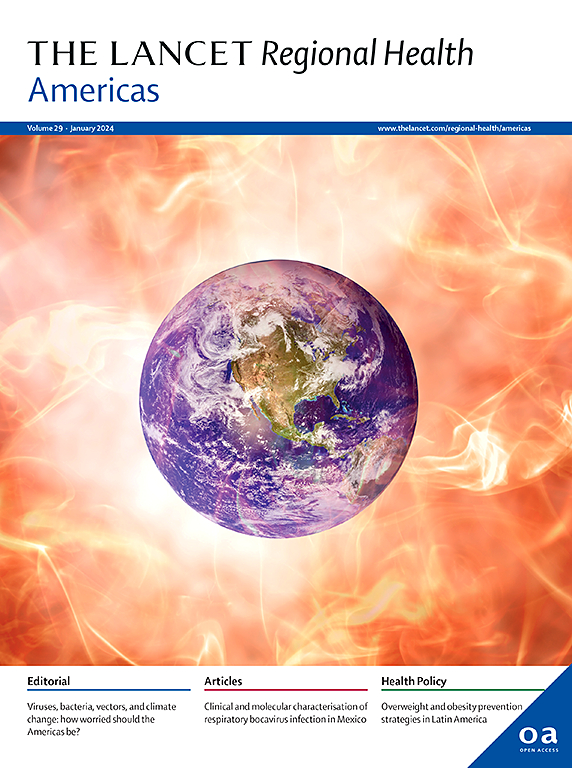Inequity of NIH cancer funding in the United States: an ecological study predicting funding based on disease burden from 2008 through 2023
IF 7
Q1 HEALTH CARE SCIENCES & SERVICES
引用次数: 0
Abstract
Background
Disease burden has been used to predict National Institutes of Health (NIH) funding but included diseases with little underlying relationship. Here we focus on cancers to create a more appropriate model to allow for more targeted scrutinization of funding allocation.
Methods
An ecological study using NIH funding data (2008–2023) was performed. Inclusion of cancers was based on their presence in the NIH Research Portfolio Online Reporting Tool and the 2021 Global Burden of Disease (GBD) study. Disability-adjusted life years (DALY) were collected and to evaluate the impact of public interest, Google Trends data was used. Multivariable linear regression determined appropriate funding based on disease burden and public interest. To quantify how each cancer’s funding differed from model predictions residual values were used to calculate the percent over/under funding.
Findings
Fifteen cancers met inclusion criteria. Neuroblastoma had the greatest ratio of funding to DALYs per 100,000 people (US$14,000,000) while lung cancer had the lowest (US$300,000). Stomach cancer was the most underfunded (197.9% [95% CI: 136.0%, 276.2%]) while brain cancer was the most overfunded (64.1% [95% CI: 53.8%, 72.1%]). Even at their lowest funding values in the study period brain, breast, and colorectal cancer all had greater than 40% overfunding. Contrarily, the lowest annual funding for leukemia, uterine, and stomach cancer received less than 150% of expected funding. Despite its overfunding brain cancer had an increase in DALYs in the study period.
Interpretation
Modeling by disease category demonstrated disparities in funding indicating the need for reevaluation for possible funding inequities. The year-by-year approach taken in this study will drive the ability for future research to better understand NIH funding decisions. Additionally, the role of public interest in research funding needs to be further evaluated to ensure that popularity does not override disease burden, in funding decisions.
Funding
No Funding.
美国国立卫生研究院癌症资助的不公平:一项基于2008年至2023年疾病负担的预测资助的生态学研究
背景疾病负担曾被用于预测美国国立卫生研究院(NIH)的经费,但其中包括的疾病与此关系不大。在此,我们将重点放在癌症上,以建立一个更合适的模型,从而对资金分配进行更有针对性的审查。方法利用美国国立卫生研究院的资金数据(2008-2023 年)进行了一项生态研究。根据美国国立卫生研究院研究组合在线报告工具(NIH Research Portfolio Online Reporting Tool)和2021年全球疾病负担(Global Burden of Disease,GBD)研究中的癌症数据,将癌症纳入研究范围。收集了残疾调整生命年(DALY)数据,并使用谷歌趋势数据评估公众兴趣的影响。多变量线性回归确定了基于疾病负担和公众兴趣的适当资助。为了量化每种癌症的资助与模型预测的差异,我们使用残差值来计算资助过高/过低的百分比。每 10 万人中,神经母细胞瘤的经费与残疾调整寿命年数的比率最高(14,000,000 美元),而肺癌最低(300,000 美元)。胃癌的资金不足率最高(197.9% [95% CI: 136.0%, 276.2%]),而脑癌的资金过剩率最高(64.1% [95% CI: 53.8%, 72.1%])。即使在研究期间的最低资助值,脑癌、乳腺癌和结肠直肠癌的超额资助都超过了 40%。与此相反,白血病、子宫癌和胃癌的最低年度资助额不足预期资助额的 150%。尽管脑癌获得了超额资助,但在研究期间,其残疾调整寿命年数却有所增加。本研究中采用的逐年研究方法将有助于未来研究更好地理解美国国立卫生研究院的资助决策。此外,还需要进一步评估公众利益在研究经费中的作用,以确保在经费决策中,公众利益不会凌驾于疾病负担之上。
本文章由计算机程序翻译,如有差异,请以英文原文为准。
求助全文
约1分钟内获得全文
求助全文
来源期刊

Lancet Regional Health-Americas
Multiple-
CiteScore
8.00
自引率
0.00%
发文量
0
期刊介绍:
The Lancet Regional Health – Americas, an open-access journal, contributes to The Lancet's global initiative by focusing on health-care quality and access in the Americas. It aims to advance clinical practice and health policy in the region, promoting better health outcomes. The journal publishes high-quality original research advocating change or shedding light on clinical practice and health policy. It welcomes submissions on various regional health topics, including infectious diseases, non-communicable diseases, child and adolescent health, maternal and reproductive health, emergency care, health policy, and health equity.
 求助内容:
求助内容: 应助结果提醒方式:
应助结果提醒方式:


